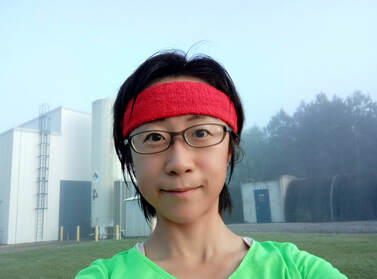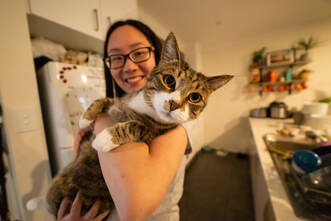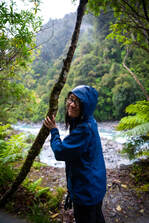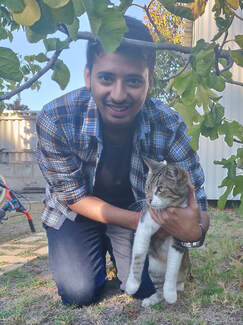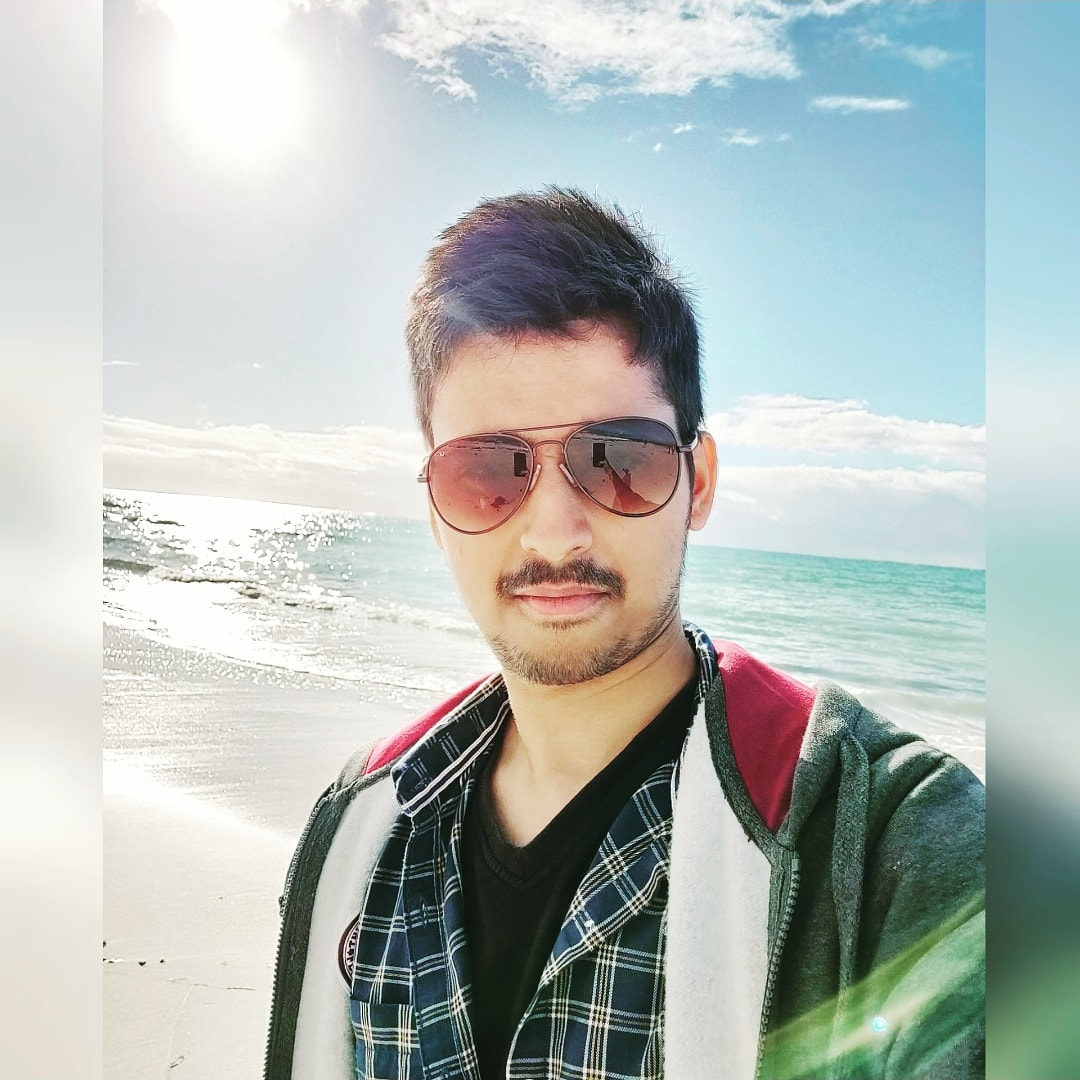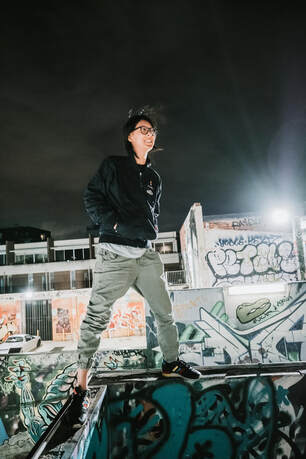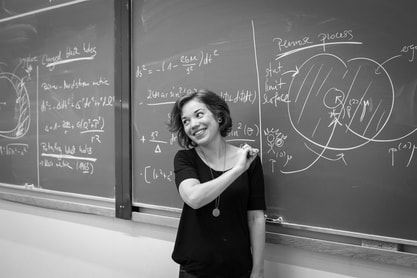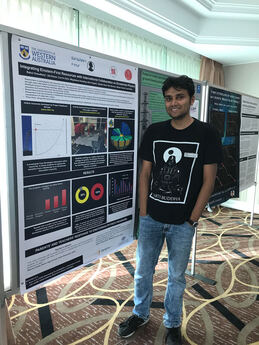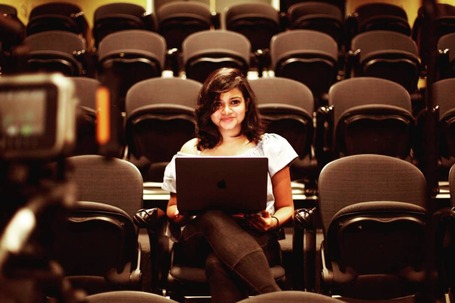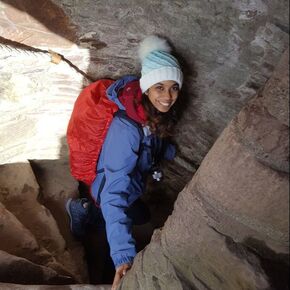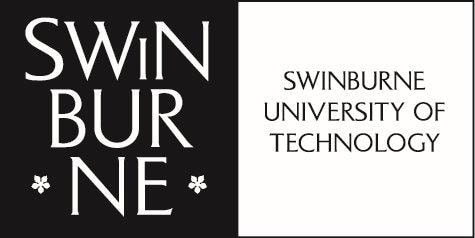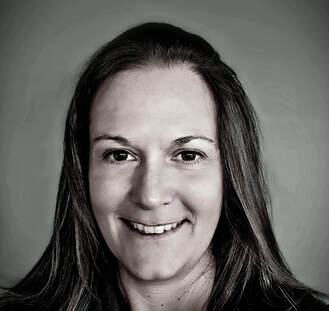 When I was a kid, I was always in trouble. So, one day, my parents had to come all the way to school camp to pick me up as I did something surely terrible and disruptive, I cannot really remember what, and the teachers wanted me out of there. My dad told me to wait in the car while he went to talk to my teachers. The car had a roof window, and we were at a good altitude far from big cities and light pollution, in the Swiss Alps. I was in the passenger seat playing with the electric chair recliner and there it was, the milky way! Bright and beautiful, like a river made of millions of tiny lights. I knew then that I wanted to be a scientist. I was nine years old. A few years later, after graduating from an art lyceum (lots of painting and sculpting), I started my degree in physics at the University of Milano Bicocca. During this time, I discovered that mathematics is not the dull exercise that they sometimes teach in secondary school, but there is much beauty in it. Alas, I also discovered money and the freedom that comes with it. I was lucky enough that my first “grown up job” was paying OK and was interesting, so I deep dived into it. After much travelling around the world, moving from my native country (Italy) to Ireland, getting married, having 3 kids, and building a career in digital marketing, I decided to go back to my books and completed an honours degree in mathematics at Technological University Dublin. But, while Ireland is a wonderful country, I was way too cold there, so I was more than happy to move to Australia with my family when the opportunity arose. I was not done with studying though. In 2018 I started a Master of Philosophy in statistics at Monash University (because, you know, maths), which I completed recently, and that led me to starting a PhD in Astrophysics where I could apply my knowledge of statistics to the study of gravitational waves. I came full circle from that evening in the Alps when I was nine years old. In my research, I try to improve existing detection methodologies of gravitational waves generated by supermassive black holes dancing around each other. I currently work on a project focussing on how the use of wrong models can lead to false detections of gravitational waves in millisecond pulsars experiments. I am a big advocate of diversity in science and believe there is still much work to do to bring equality between genders in any field. From my very own experience, I am painfully aware of how hard it still is to work full time as a mother or having a career as a woman. My website https://vdmwebsites.wixsite.com/valentinadimarco
0 Comments
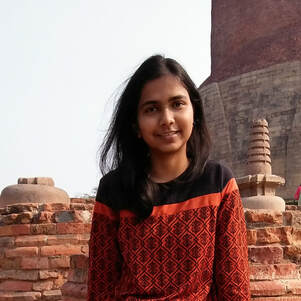 During my Master’s thesis, I got introduced to modelling compact objects such as neutron stars and then extended my work to estimate gravitational wave amplitudes from isolated spinning neutron stars and millisecond pulsars. For this project, I worked on pulsar data from the Australia Telescope National Facility database. The idea of such dense exotic stars was quite fascinating, and I wanted to explore the subject further. After a quick chat with my current supervisors, I was convinced that if I want to continue studying pulsars and gravitational waves, then Ozgrav is the place to be. Currently, I’m a newly appointed PhD student with Ozgrav at the Centre for Astrophysics and supercomputing, Swinburne University. For my PhD, I’ll observe and analyse pulsar data from one of the most powerful and sensitive radio telescopes in the southern hemisphere i.e. MeerKAT. We will explore the galaxy's pulsars for studies of relativistic gravity, binary evolution and probe the millisecond pulsars that inhabit the globular clusters. Travelling from India to Australia to commence my PhD has been a big challenge. Even though I got my offer letter in 2019, the international travel ban put a halt to the process all along. I am fortunate to be one of the few people who could travel to Australia during the pandemic and grateful to everyone who helped me along the way. In the little amount of time I have spent here, I have met and interacted with some amazing people who have made moving to a whole new hemisphere and continent much easier. The beautiful city of Melbourne is the icing on the cake and the weather here never fails to surprise me. In my spare time, I enjoy acrylic painting and teaching myself a chord or two on the keyboard. The flora and fauna in Australia is quite different from my home country and I love walking around and exploring those. 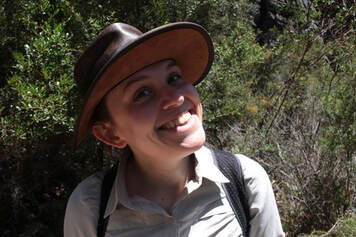 I work on gravitational wave data analysis, such as searching for continuous waves from spinning neutron stars and trying to learn about massive black hole binaries with pulsar timing array results. I also enjoy outreach and I know many of you have been pestered by me to write for the LIGO Magazine! I started working on gravitational waves during my PhD in Birmingham (UK). The opportunity to travel to conferences and see a bit more of the world was wonderful and at the end of my PhD, I headed for Melbourne to join OzGrav as a postdoc. Being able to move to the other side of the world and live in Australia for a few years has been amazing. OzGrav has a great community and I've enjoyed the chance to meet and work with many of you over the years. I've loved exploring Australia (although not as much as I'd hoped to) and in my free time I enjoy photography and getting out for walks in the countryside. This was one of my favourite things about living in Australia - at any moment I might see a bird or bug that was totally new to me to attempt to photograph! As many OzGrav-ers will be only too aware of, being far away from family during the pandemic has been tough. Not only that, job hunting has been pretty tricky too. With my postdoc contract coming to an end, I applied for the OzGrav COVID funding scheme and was very happy to be offered a place at Swinburne during 2021. I was still missing my family dearly, but having some job security and being able to continue working with OzGrav was a huge relief. Although the lockdowns meant I couldn't get over to Hawthorn as much as I would have liked, it was great to work with the Swinburne team on a project about the sensitivity of the MeerTime pulsar timing array - and learn a bit about pulsar observations along the way. Late last year I moved back to the UK - a strange experience during lockdown, but a comfortable flight with only 23 passengers on one of the planes. I'm now working at the University of Birmingham on data analysis for the LISA mission as well as being an OzGrav Associate Investigator, so I hope to continue working with many of you in the future. 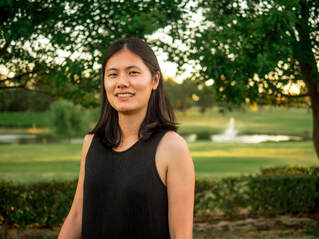 Qi began her education by studying telecommunication engineering and computer science. After visiting Prof. Linqing Wen and Prof. David Blair’s groups at the University of Western Australia (UWA), she became extremely interested in physics, particularly gravitational waves. She took on a PhD project in UWA and later became an OzGrav and UWA postdoc. For the last ten years, Qi worked on low latency searches of gravitational wave signals and participated in many exciting new discoveries with LIGO and Virgo. During this time she worked with talented people from LIGO and OzGrav and gained many transferrable skills for both industry and academia. These skills include reasoning and deduction skills, data analysis and reporting skills, and interpersonal skills. Now, Dr Qi Chu just started her new role as a data scientist at Australia’s largest natural gas provider, Woodside, in Perth. She’s currently onboarding a data science team to work on various data rendering and optimisation projects from Woodside’s natural gas production process. Industry has been adapting to the new era of big data technology and artificial intelligence, including traditional resource companies like Woodside or BHP. There’s more investment in new data infrastructures and technologies to transform data-driven organizations. Researchers from academia are particularly welcome to bring in new perspectives and skills to this transformation. 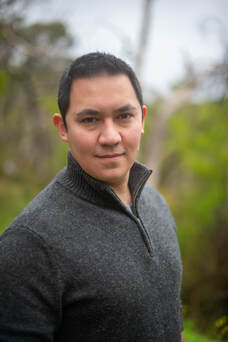 Sebastian Ng's research centres on the development of high-power, low-noise laser systems and the development of adaptive optics for thermal compensation of laser interferometers. Throughout his undergraduate study, Sebastian was fascinated by the size and complexity of the laser-based gravitational wave detectors. This contributed to his pursuit of a PhD in laser physics developing high-power holmium-doped fibre lasers. Fortuitously, OzGrav began at the completion of Sebastian’s PhD and he was hired to lead the University of Adelaide’s investigation into 2µm laser sources for cryogenic silicon detectors. In this role, he developed fibre seed lasers and amplifiers in collaboration with the Defence Science and Technology (DST) Group while expanding his knowledge base into wavefront sensing, high precision material characterisation and the design and installation of hardware into LIGOs vacuum enclosure. He also received the opportunity to visit the Hanford observatory where he worked on the laser upgrade and assembly of a CO2 laser actuator for thermal compensation. OzGrav and his node leader granted Sebastian many other opportunities for professional development, including chairing Ozgrav’s Quantum program, undergraduate lecturing and course design, and the oversight of a range of research themes throughout the OzGrav node at the University of Adelaide. QuantX Labs, a start-up company based in Adelaide that specialises in ultra-precise timing solutions, recently approached Sebastian to lead the development of optical clocks for space-based Positioning Navigation and Timing (PNT) delivery. In negotiation with QuantX Labs and OzGrav, Sebastian will continue his supervision responsibilities and oversee laser development at the University of Adelaide, while also capitalising on the experience he has gained from his time at OzGrav within the industry sector. As part of QuantX Labs, Sebastian leads the team developing optical clock technology, as well as seeking new avenues for investment. A primary goal of the company is to simplify the transition from university project to commercial product. 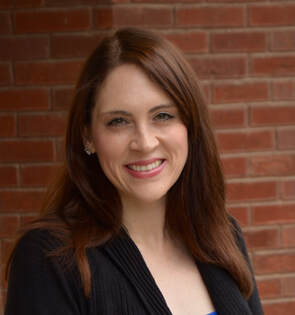 If you had told me as a kid that I could work with people from all around the world, using telescopes located in some of the most amazing locations on Earth--and even more amazingly, in space--to understand the most extreme events in the Universe, I’m not sure I would have believed you. In fact, it wasn’t until the end of the first six months of my PhD at Monash University that I focused on studying the nature of extreme astrophysical phenomena that we all know and love in OzGrav (originally I focused on indirect detection of dark matter). With the support of my PhD advisors, this decision to change fields mid-PhD provided me with the unique opportunity to work directly with experts in high-energy astrophysics at the Harvard-Smithsonian Centre for Astrophysics. After graduating from my PhD in 2015, I was a postdoctoral fellow at the Center for Cosmology and Astroparticle Physics (CCAPP), at the Ohio State University, and an Assistant Professor at the Niels Bohr Institute, at the University of Copenhagen (KU). In 2019, I also became an Assistant Adjunct Professor at the University of California, Santa Cruz (UCSC). My time at CCAPP, KU and UCSC was incredibly rich and rewarding. With the support and opportunities provided to me during my time at these institutes, I was able to significantly broaden and expand my research. Now, I focus on multi-wavelength and time-domain observations to better understand the physical processes and observational signatures related to the extreme death of stars and their compact objects. In 2020, I joined the School of Physics at the University of Melbourne as a Senior Lecturer, ASTRO-3D fellow and OzGrav Affiliate. Although my start back in Melbourne was delayed by Covid-19, I have been warmly welcomed by everyone in OzGrav. I’m looking forward to learning from and connecting with Centre members, as well as supporting them with their goals; I want to provide the same supportive and welcoming environment that I experienced during my career at OzGrav (and ASTRO-3D) so far. So, please feel free to reach out at any time, as I would love to hear from you! Former OzGrav PhD student Lilli Sun has returned to the welcoming arms (virtual—social distancing, right!) of OzGrav as our new Associate Investigator. Lilli tells us about her career journey over the last seven years…
Seven years ago, I was a project manager in IBM China System and Technology Lab, leading software development for IBM Storage products. I started working in that group as a software engineer right after getting my Master’s degree in Engineering in Shanghai Jiao Tong University. I liked the job, but couldn’t stop thinking about the things I loved better: physics, general relativity, black holes, etc… That year, I wrote an email to Prof. Andrew Melatos at the University of Melbourne (UoM), asking about the possibility of doing a PhD program on gravitational waves, which completely changed the direction of my life. Six years ago, I started my PhD candidature in Andrew’s group, mainly working on continuous-wave data analyses. Lacking background knowledge, I spent a lot effort catching up on maths and physics. It was great fun going back to classes, doing homework, and sitting in exams. Meanwhile, I started working on a novel method introduced and developed by the UoM group — the Viterbi tracking. I remembered calculating the Viterbi paths in exams when I was an undergrad in Engineering school. That felt like, déjà vu. Five years ago, GW150914 happened, followed by all kinds of excitement including a golden multi-messenger event. I could not conceive of a more exciting PhD life! In those years, I implemented the first Viterbi search pipeline; analysed the first set of Advanced LIGO data, targeting Sco X-1; and then, extended my work to many other types of fascinating sources: young neutron stars, remnants of binary neutron star mergers, and ultralight bosons. Two years ago, I left Australia and started a postdoc position in the LIGO Lab at Caltech, after getting my degree. I continued looking for waves from neutron stars and conjectured boson clouds, and I spent a lot time at the two LIGO sites, calibrating the detectors. Getting to know the complicated instruments made me feel much better than treating the data purely as output of a giant black box. I miss the time in the desert and swamp, which was quiet, special, and accompanied by many friends. This has been a difficult year for everyone, starting with bush fires throughout Australia, followed by COVID-19. Setting all of those aside, I couldn’t feel more excited to come back to Australia as a research fellow at the Australian National University and as an OzGrav Associate Investigator, starting a new journey in gravitational astrophysics research. A few years after I got into this field, detecting transient events has become a daily routine. I cannot wait to see what lies ahead. But first of all, I hope the global pandemic will come to an end soon, and that we can meet each other in person again! Growing up and studying in China, I got my first chance to go on exchange to Australia during my undergraduate years. The exchange was to the University of Queensland and it started the journey that brought me to Australian National University (ANU) for my PhD. By then I had already been introduced to the world of optics through undergraduate projects in optical coherence tomography, which brought together fibre optics and digital signal processing (DSP), the two key themes of my PhD. My first exposure to gravitational waves (GW) and their detection was in my final undergraduate year when I did a project with the Centre for Gravitational Astrophysics at ANU. That work introduced me to coherent interferometry and how it can be applied more broadly outside of GW detection. The research was challenging but ultimately rewarding and fun, so I decided to come back for more. I am now 2 years into my PhD, focussing on laser frequency metrology and developing stabilisation techniques using fibre optics and DSP algorithms. Over the past four years, I dived into the world of field-programmable gate array (FPGA) based programming, and I hope to extend my knowledge and experience further through the rest of my PhD and my future career. Beyond the lab I enjoy spending my time outdoors. I’ve taken advantage of the many nice hikes in the Canberra area and beyond, and I hope to do more in the future. One of my favourite walks to date is the Grand Canyon track in the Blue Mountains. Alongside hiking, I enjoy landscape photography and occasionally portraits as well, but exclusively of cats, ducks and other wildlife. At school, I was taught that cats understand Physics better than most humans do, particularly in adjusting their body postures to gravity. My obsession for both cats and physics started back then.
Like most other kids at that age, I was fascinated by stars and space, always stuck to the National Geographic channel on TV looking for new discoveries and space documentaries. This interest never faded away and it led me to study science for my undergrad, even though it’s not a very popular option in India. During my Master’s, my supervisor introduced me to gravitational wave science (a very hot topic at that time) and I worked on analysing detector data, trying to identify gravitational-wave signals. After graduating, I started looking for potential PhD opportunities and found that the data analysis group at the University of Western Australia was the best place to continue my studies. I started off as an intern for 3 months and then became a full-time PhD student in the group. Prior to this, I always liked working independently, but here I am, part of this huge collaboration that is OzGrav, with people from different streams working together towards a common goal. This is a new and an amazing experience for me. At OzGrav, I’ve had more than just an academic growth—I’ve achieved all-round development. The best part about OzGrav is the annual retreats, especially the fun activities involving teamwork. Science aside, amidst my usual flow of work I also enjoy playing video games, watching anime (hail prince Vegeta!), going out on bike trips with a friend and petting random cats on the street (but getting beat up by them in the end). I do not have any particular plans for my future yet, but that said, I am very excited to venture into the unknown. After spending 2.5 years as an operator at LIGO Hanford I thought it was about time to move on. Well, my visa extension was expiring but that wasn’t a surprise. I planned for grad school from the very beginning (and I couldn’t be more thankful to the higher-ups at the site who hired me knowing that I’d be gone in a couple years). I never planned to move to Australia though. I had to drop off my two cats halfway in Bangkok with my parents before I continued my trip to Canberra. I was playing it by ear. This was June 2017.
After having spent less than half a year at ANU I heard of the LIGO commissioning break and saw the opportunity to be involved in something fun. I asked (almost begged) my advisor David McClelland to send me back. He kindly did, a couple of times, to install and commission the ANU designed squeezer (as David would emphasis, it’s true though). The very first time I was sent back I barely knew what squeezing was. I spent about a month reviving the 2um squeezing experiment to its old glorious self and then I was off to Hanford alongside with a postdoc Terry McRae. After having to follow someone else’s schedule for most of my PhD I thought I couldn’t be happier to be back at ANU lab where I have control over my own. Unfortunately, the Covid-19 lockdown and now after-hour lab access restriction means I couldn’t get things done whenever I want (I’m naturally a night owl). But looking on the bright side it is easier to set aside time to enjoy my hobbies such as drawing comics, taking photos, and making videos (which I haven’t done recently). I take commissions and participate in small contests for small coffee money when I can! I’m a mathematical physicist doing research in science education. I develop digital learning environments in modern physics and study how abstract scientific concepts like black holes or four-dimensional spacetime can be visualized.
When I was 12 years old, I read Stephen Hawking’s ‘A Brief History of Time’ and I was immediately hooked. From then on, I decided I would study physics to understand the Universe. I didn’t end up solving all the mysteries of the cosmos though. So instead, I’ve made it my mission to inspire and educate the next generation of big thinkers. My interests have always been broad, and I reckon this reflects in my educational pathway. I studied physics and mathematics at the University of Göttingen, Germany, and the University of Oslo, Norway. During that time, I worked as a teaching assistant in undergrad courses and did internships with science magazines. I’ve always enjoyed playing with abstract ideas, but it was fun to share this knowledge with others as well. So, I enrolled in a distance study program on public relations management to become a better communicator. Now I combine all of these experiences in my PhD, which has brought me to the University of Western Australia in Perth and the Swinburne University of Technology in Melbourne. I literally moved to the other end of the world in the name of science! There are so many cool things about my job: I love to excite the inner scientist in others and it’s just plain fun to stretch everyone’s minds with concepts of modern physics. Plus, I really enjoy all the travelling that comes with working in academia. My current research projects are pretty exciting: I look at challenges and opportunities of using virtual reality in science education. Virtual reality allows you to push the limits of reality and that’s just perfect if you want to experience the extreme physics of black holes or warped time. I’m also very close to submitting my PhD-thesis in which I studied how high school students wrap their minds around Albert Einstein’s theory of relativity. Some fun facts about me:
As a child, I remember being intrigued by the very sight of books in my school library. At that time, I could not effort to buy many books. But I used to explore my town library and find as many good books as I could. Probably, those were the early phases when I developed an interest in science. One of the most influential books I read, when I was a high school student, is A Brief History of Time. This had a huge impact on me and I started exploring more about the Einsteinian world of physics. This was the beginning of my journey towards gravitational wave science.
My interest in teaching led me to join the Einstein-First project and become a part of the OzGrav outreach team. Currently, I am a Ph.D. student at the University of Western Australia developing ways for teaching Einsteinian physics to school students. I have done my Masters in Physics from Tezpur University, India. In my free time, you will find me listening to rock music - particularly exploring prog albums. I like reading books: both fiction and non-fiction. I am also a passionate quizzer. My other hobbies include travelling and watching movies. You can connect with me on Facebook: https://www.facebook.com/profile.php?id=100001525648701 or Twitter: @imrahulkc I was around ten when I found ‘A Journey to the Centre of the Earth’ by Jules Verne from my parents' collection. It was in a translation by a famous Bengali author, Adrish Bardhan.
Classroom science teaching was quite bland, so I thought ‘science fiction’ will be an extension of that. To my surprise, it wasn’t! Within the first few pages, the book sucked me inside a rabbit hole. I was rooting for an eccentric scientist, for characters in a completely different geographic location, culture, and time-period from my own. It presented fantasy with a tinge of established science, a mix of outrageously improbable and possibly impossible situations; enchanting enough to hold my attention. I wanted to know how magnets behave, how earth's gravity worked and found the characters to be as intrepid as David Livingstone. I kept reading more Verne. The sheer fluidity with which he introduced key science concepts—from the electromagnetic spectrum to fluid dynamics; through ingenious and adventurous plot points—was intensely captivating. Essentially, it was the ultimate ‘scientific romance’. And then we started doing levers, fulcrums and Archimedes' principle as a part of the school science curriculum. To my surprise, it became easily my favourite. By the time Physics, as a subject, was introduced in Grade VII, I knew I wanted to do it. It was the only school subject that captured my passion and curiosity completely. Popular science books that my parents introduced me to kept fuelling my love. George Gamow's ‘One Two Three... Infinity’ was one of my favourites. I went on to get an Honours and Masters in physics. Looking back, I think Verne, in Bardhan's amazing translation, influenced my early enthusiasm. While Verne died more than a century before, Bardhan passed away this year. There are many examples of how literature has popularised science; this is from my own experience. 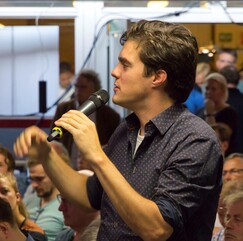 My first University experience was not physics, but aerospace engineering. To summarise, material science seemed most interesting to me, so after one year I switched to the stuff we do and love. My first long project was in nuclear physics, specifically in perturbed angular correlation of radioactive isotopes in the reactor institute of Delft University of Technology, in the Netherlands. We used the effect of the environment (e.g. acidity level) on the timing of cascade gamma emission of those isotopes to probe said environment. Next was particle physics and I was lucky enough to do a project on optical alignment of future linear accelerators at the European Organization for Nuclear Research (CERN). After a short project at the Stanford Linear Accelerator Center (SLAC) on Silicon microstrip detectors for X-ray free electron diffraction experiments, I started a PhD at Nikhef in Amsterdam. There I worked for Virgo and the Kamioka Gravitational Wave Detector (KAGRA), while developing an interferometric readout of a Watt linkage type accelerometer. This was a great experience and, as we all know, ‘well timed’ (or, I was lucky once again). It gave me ample opportunities for outreach that led to 10+ public seminars and a national TV appearance in the Netherlands! In June 2016, a few months after the first gravitational wave detection was announced, a Dutch TV crew flew to Pisa, Italy, to shoot an episode for Klokhuis—a Dutch children’s TV show. Explaining the story of gravitational waves to our target group (8-12-year-old children) was challenging, but I like to think we did a good job. Our script was presented to perfection by the presenter, and I even got a few seconds of fame as the ‘physics expert’. Growing up watching Klokhuis every day, so this meant a lot to me. The show was aired in February 2017, and a few months later I was pointed to a tweet by a Belgian professor. He praised the ‘excellent’ show, but the biggest compliment of all was the drawing he posted there by his 10-year-old child depicting the concepts we had explained in the episode! My next goal is to help design, fund and build the 3rd generation of gravitational wave detectors. In addition to the opportunity to study OzHF where we push a 2.5 G high frequency detector to a good position, I would love to work on the Einstein Telescope or Cosmic Explorer. The future is bright for our field; I hope to benefit from the momentum and hope that we’ll ‘never stop listening’! 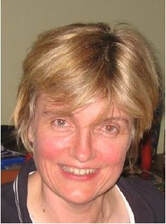 I studied Mathematics at Moscow State University before I came to Australia in 1993, at which time I started a PhD in Applied Mathematics under the expert tutelage of Bill Moran at Flinders University in South Australia. I have worked on a variety of signal processing projects, such as Wavelets; Statistical Signal Processing and Optimisation; and Radar and Sonar Sensor Management. My own special skill is finding elegant practical applications of mathematical knowledge to unsolved problems. OzGrav Chief Investigator Andrew Melatos recently introduced me to the astrophysical problems associated with gravitational waves recorded by LIGO. These recordings may contain ‘messages from the Universe’. I believe that the way to understand these message-waves is by using the methods of signal processing. I work on developing cutting-edge, radical and efficient algorithms in this exciting area—my team were the first people to introduce the Viterbi Algorithm to detect continuous gravitational waves. Our implementation is now recognised by LIGO as the standard for this. I’m also currently working on pulsar timing analysis. I continue to raise my two boys who also have mathematical interests (one is already a Humboldt Research Fellow) and keep a menagerie of four-legged (two dogs) and no-legged creatures (two fish) as companions. Unfortunately, only the two-legged creatures in my family have mathematical interests. 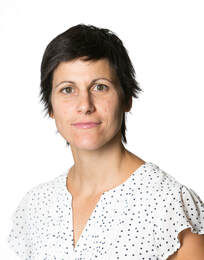 I was interested in astronomy from a young age. Some of my earliest memories are from going for walks in the evening with my father, who was an avid amateur astronomer. He would point out planets and constellations and explain how the Earth’s rotation and orbit are the result of gravity. Like many, when I decided to take on a PhD, I was unsure where it could or where I wanted it to take me. I just knew I was interested in gravitational waves so studying them sounded good to me (for a few years at least). My first exposure to the concept of gravitational waves came in 2006, when it was listed on the topic list for the research component of my third-year undergraduate physics course. I was intrigued and spent the next semester teaching myself general relativity (which was not formerly taught at my university until honours level) to unpack Einstein’s field equations. I learnt about the types of various detectors around the world and found out about LIGO. Although the prospect of detecting gravitational waves seemed onerous and still a long way off, the idea of an entirely new observational window on the Universe really inspired me and I wanted to be a part of it. During my PhD, I developed a data analysis pipeline to search for a continuous signal from neutron stars in Low Mass X-Ray Binary systems. I continued to write and run search pipelines as a postdoc at Monash University, searching for the stochastic gravitational wave background. Developing and testing analysis code and scripts in different computer languages, as well as installing and maintaining software packages on various operating systems, provided me with a desirable skill set in the field of Scientific Computing. It was a busy and exciting time with many new detections coming in and OzGrav coming together and gaining momentum. I enjoyed my involvement with LIGO and was excited by the prospects of OzGrav, however I was also feeling ready to try something new. There was an opportunity for a Senior Scientific Software Engineer at the Australian Nuclear Science and Technology Organisation (ANSTO), which runs the Australian synchrotron facility. This job would allow me to combine my passion for science and my experience in computer programming and software development to facilitate leading edge science for the benefit of the broader community. As part of the Scientific Computing team at the Australian Synchrotron, I am responsible for designing and developing the software solutions for the operational and scientific outcomes of the facility. A synchrotron is a light-source that generates extremely bright light by accelerating electrons to almost the speed of light and deflecting using magnetic fields. At each deflection, very intense light is emitted which is a million times brighter than the sun. The scientific research and innovation output of the Synchrotron span hugely diverse fields—from medicine to cultural heritage—and the many specialised ‘beamlines’ or experiments make my work interesting and varied. The systems developed and maintained within Scientific Computing range from communicating and moving technical hardware (motor, mirrors, cameras, etc.), to enabling facility users to access and analyse their data. And for the multitude of problems, there are usually a multitude of possible solutions. My job involves staying up-to-date with and on top of the ever- changing and advancing programming tools and software engineering. This means I am constantly learning and applying new tools and technologies, often working on multiple projects at once. Being part of a team also means there is lots of collaboration, usually involving multidisciplinary groups. This teamwork and collaboration is something I really enjoy, and am happy to be able to continue after the collaborative experience of being part of both LIGO and OzGrav. Originally featured in LIGO magazine. 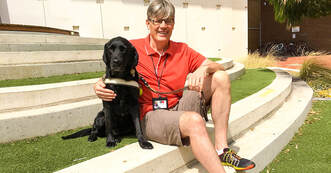 At 12 you were diagnosed with a degenerative eye disorder. Did you know you would eventually go blind? Yes, but the speed of that varies. As a teenager growing up in Sydney I had night-blindness, but I drove a car until I was 30 and I was able to pursue my PhD in chemistry and my career as a scientist. In 1992 I was one of the foundation team members of the Synchrotron project, which generates powerful X-rays to analyse the molecular structure of various substances, and I worked in that field for more than 20 years. But after I turned 40 my visual field began collapsing inwards and my capacity to operate precision equipment was really affected. In 2010 you retired prematurely due to your blindness – that must have been distressing. It was a dark period; there was a lot of self-pity and despair at what I’d lost, because one of the joys of working on the Synchrotron had been collaborating with scientists from different fields – drug design, the mining industry, earth sciences, optics. Colleagues in Japan offered me a desk role at a particle physics facility but after three years there I returned to Australia looking for a new direction. So you decided to become an astrophysicist. Why? Part of my make-up is to take on challenges. I’d always been interested in astrophysics and I still had a bit of vision in one eye; it wasn’t enough to analyse visual data but I’d been using screen-reading software for several years. I guess I had blind faith, no pun intended. In 2015 I heard a radio interview with some of the astrophysics team from Swinburne University; my wife Atsuko and I lived nearby. I approached them and they were fantastically supportive, particularly my supervisor, OzGrav Chief Investigator Jeff Cooke. Shortly after, you discovered you weren’t the world’s only blind astrophysicist… In 2016, Jeff told me he’d seen a TedX talk by blind astronomer Wanda Diaz Merced, who had devised technology that translates digital data from telescopes into different sounds. Wanda was an inspiration and we are now collaborating on refining these sonification methods with the help of Jeff Hannam, a sound designer at RMIT University. What’s the advantage of listening to data from telescopes rather than looking at it? Humans respond faster to sound than to vision; also, our ears are very good at selecting unusual signals out of noise. One of my interests is studying violent explosions in distant galaxies – these can be very fast and transient events, so we often have many telescopes around the world sharing data as we race to observe them before they fade. Transforming the data into sound can speed up the process. You also work with the ARC Centre of Excellence in Gravitational Wave Discovery… Gravitational waves are caused by massive events such as collisions between neutron stars that cause a ripple to pass through space like the wave on a pond. By studying the light from these events millions of years ago, we hope to explain why the universe looks like it does and what might happen to it in the future. What’s been the impact of your new career? The ability to feel enabled rather than disabled has restored my balance in life – I owe a lot to the team at Swinburne and my wife. My vision is reduced to perceiving light and dark, and discerning shapes with one eye, but my trusty guide dog, Trooper, gets me around. I hope the research we’re doing into sound will ultimately help sight-impaired people in many walks of life, not just astrophysics. This Q&A was orginally published by The Australian in The Weekend Australian Magazine 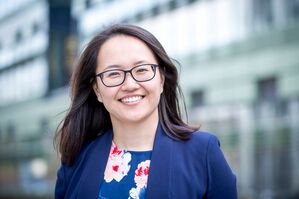 Risk-taking means different things to different people. When a scientist takes a risk with their work, what are they putting on the line? It could be months of effort, their reputation, or the next career step. But with risk, comes reward. When scientists pursue ambitious science there’s no guarantee of success, but they’re still prepared to push the boundaries to advance frontiers more quickly. Jielai Zhang—OzGrav’s newest postdoc working with Chief Investigator Jeff Cooke in the Deeper, Wider, Faster program--has all the traits of a born scientific risk-taker. This is no surprise if you dig into her background and her upbringing: born in Shanghai, China, Jielai moved to Sydney when she was 8-years-old. She completed an undergraduate degree in engineering and science, majoring in maths and physics at the University of Sydney before crossing continents to take a PhD in astrophysics and astronomy at the University of Toronto. Jielai then seized the opportunity to become one of the first Schmidt Science Fellows in 2018, shifting her focus to work on biomedical imaging at IBME at the University of Oxford. Her combination of curiosity and an appetite for taking risks has now taken her to the cusp of her next leap: starting a new role with OzGrav to study how astronomical phenomena changes on timescales of seconds. Jielai’s academic journey so far… I started taking significant risks in my work when I travelled to Canada for my PhD at the University of Toronto in astrophysics and astronomy. During my PhD, I built a new telescope in a small team of 4, the Dragonfly Telephoto Array, using an unproven novel design. The unknown factor was worth the risk and I did not shy away. I wanted to explore faint galaxies that nobody had looked at before and we had to build a new telescope to see it. At the end of my PhD, I become interested in a new field of astronomy called ‘Time Domain Astronomy’. This looks at how the Universe changes on a very fast time scale. The constellation in the sky used for sailing 1,600 years ago is the same today but the sky is also changing on very fast time scales – we just didn’t know about it before. We’re talking days, minutes, seconds or less. The new field of astronomy I now work with requires very fast exposure times which acquire a lot of data, so I had been looking into new techniques, methods and tools from other fields that I could apply to this huge data volume in astronomy that we haven’t had to deal with before. That’s when I came across medical imaging, deep learning and machine learning. I zeroed in on medical imaging as I started to investigate it because of the way it applied a method called ‘Deep Learning’ which I felt was useful to astronomy. I was intrigued to learn more and then I came across the Schmidt Science Fellows program which would allow me to pivot for a whole year into another field rather than learning slowly on the side which is what I thought I may have had to do. The program would allow me to get face to face exposure to people in the field that I wish to learn more about and that’s why I applied. Now, as I enter my new role as an OzGrav postdoctoral research fellow, I am confident knowing that can I approach and get advice from a network of people outside of my field. This is particularly useful when I want to apply deep learning and machine learning to new types of data. This article is an extract of the original feature published on Schmidt Science Fellows. 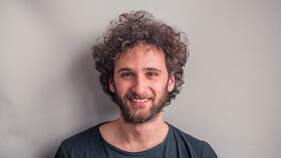 OzGrav Alumni - Postdoctoral Fellow at Caltech https://www.igorandreoni.com Tell us about your time at OzGrav. When OzGrav was established it was quite an exciting time for those who like gravitational wave science, so I applied for student membership as soon as it was possible to do so. OzGrav grew at an impressive rate. I was surprised to see how many people, who are working in many different fields, contribute to gravitational wave discovery. During my time at OzGrav I had the opportunity to be exposed to a broad range of topics, which was somewhat challenging but valuable. I particularly enjoyed the workshops where people can throw ideas and inter-node projects come to life. Tell us about your journey after OzGrav. At the end of my PhD, I wanted to continue doing research in astronomy. One of the hardest decisions I’ve ever made was to leave Australia (how could you not fall in love with it after living for a few years in Melbourne?) and start a new experience overseas. Now I work in a collaboration called GROWTH (Global Relay of Observatories Watching Transients Happen) and the focus of my research is even more gravitational-wave related—I spend most of my time chasing after LIGO and Virgo triggers with optical telescopes. The experience that I gained through my PhD with OzGrav is proving invaluable. Moreover, I am happy to witness (and continue encouraging) a productive collaboration between GROWTH and OzGrav. How did you come to decide on this career choice? I guess that becoming a researcher has always felt like a natural path to me. I like the creative aspect of being a researcher and a postdoctoral appointment is a great opportunity to better understand different potential professions. Far from tying you up too tightly, a postdoc position provides a good deal of freedom about future careers. For example, it is interesting to see how many opportunities some fellow postdocs found on their way, including several different types of roles within academia as well as exciting industry jobs. What opportunities do you believe OzGrav has provided you as a person? Most of all, the opportunity of networking and to further appreciate that several pieces of expertise must come together to produce results. What are some of the proudest moments of your career? Probably when people came to help out with our ‘Deeper Wider Faster’ program (DWF) in December 2015, when I had just started my PhD and coded a rough pipeline to discover optical transients in real time. I have never been a master programmer, so seeing the pipeline actually working and allowing other colleagues to assess the results felt like an unbelievable success. In general, I feel proud of how we encouraged the community to work together during DWF, gravitational wave follow-up and other projects. I can’t thank Jeff Cooke, OzGrav Chief Investigator, enough, especially for guiding me towards this collaborative vision. What have been the challenges in getting to where you are now? PhD students face all sort of challenges! Probably the most difficult challenge is remaining balanced and motivated in stressful times, especially towards the end of the PhD program. When starting a postdoc, the challenges are different. For example, you may feel that you cannot afford to make any mistake as a postdoc, because you can longer say ‘sorry, I’m just a student’. I guess that facing the fear of failing is a key challenge that we all should experience (and overcome) to work with greater peace of mind. What inspires you to continue the work you do every day? The chance of discovering something new at any time, especially when it is less expected. 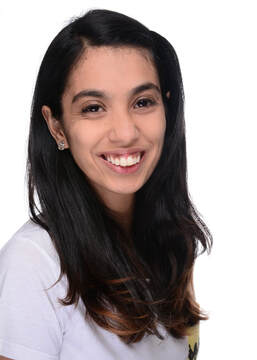 On my first day in 6th grade in a new school, my Physics teacher introduced me to astronomy in the form of pictures from NASA. She always went out of her way to introduce us to concepts beyond a planned curriculum. That, coupled with a course on general relativity and a talk by Prof. Bala Iyer on the LIGO detectors, motivated me to pursue a career in gravitational wave astronomy. Moving my life from India to Germany was one of the biggest career changes for me, and now I’m a postdoc with OzGrav at the Australian National University, in Canberra. I’ve always liked working in a lab so naturally, I chose to work on instrumentation to play around with parameters that are crucial in the design of a gravitational wave detector. For instance, for my PhD, I worked on designing and controlling the Einstein Telescope—a future gravitational wave detector planned in Europe—and now I work on quantum noise-related experiments. I also help out with the design of OzHF: a potential gravitational wave detector planned by the OzGrav community, in Australia. Having worked with precision interferometry for so long, it’s no surprise what I enjoy doing— baking! In my spare time, I love baking all forms of cakes, cookies and other desserts. When I’m not baking, I enjoy walking and hiking around all sorts of hilly and mountainy terrains! |
- Home
- About
-
Our People
- Chief Investigators
- Partner Investigators
- Associate Investigators
- Postdocs and Students >
- Professional & Outreach staff
- Governance Advisory Committee
- Scientific Advisory Committee
- Executive Committee
- Equity & Diversity Committee
- Early Career Researcher Committee
- Professional Development Committee
- Research Translation Committee
- OzGrav Alumni
- Research Themes
- Education and Outreach
- Events
- News/Media
- Contact Us
- Home
- About
-
Our People
- Chief Investigators
- Partner Investigators
- Associate Investigators
- Postdocs and Students >
- Professional & Outreach staff
- Governance Advisory Committee
- Scientific Advisory Committee
- Executive Committee
- Equity & Diversity Committee
- Early Career Researcher Committee
- Professional Development Committee
- Research Translation Committee
- OzGrav Alumni
- Research Themes
- Education and Outreach
- Events
- News/Media
- Contact Us

